
Official Word from Immigration Office.
They finally approved my permanent residence in Bhutan. Yay! But first I must leave the country for 15 days. So I’m making the best of things by coming to Santa Fe. Yay Yay! Is Santa Fe really cold?
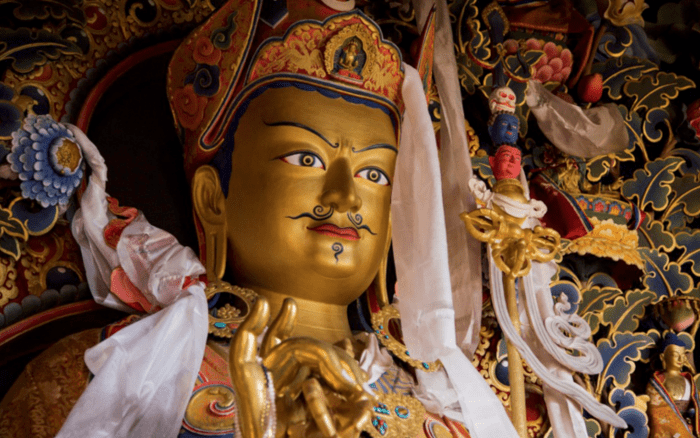
Who is Padmasambhava?
The energy of Padmasambhava is very strong in Bhutan. His special vibration is one of the main reasons I’m here, since he’s been present in my meditations for a long time. Padmasambhava is said to have been born about 700 years after Christ in the NW Indian province of Oḍḍiyāna. He traveled and studied with many great Indian masters, and was able to purify negative obstacles in Tibet and Bhutan to make way for the great tantric schools of Tibetan Buddhism. This was part of a shift away from Bön Buddhism that lasted many centuries.
Statues of Padmasambhava can be found in many sacred monasteries in Bhutan. He is usually depicted with burning intense eyes, a diamond-vajra scepter of compassionate love in his right hand and a skull-bowl of clear wisdom in his left. Padmasambhava traveled far and meditated in countless caves throughout Tibet and Bhutan. One of those is the Tatsang monastery near Paro, called Tiger’s Nest. According to legend, Guru Rinpoche flew to the site as the fiery Dorje Drolo, one of his eight manifestations, on the back of a tigress, a form assumed by his consort Yeshe Tsogyal to subdue the local demon. He and his consort meditated in the cave for three months, and years later in 1692 the Tatsang monastery was built in this place.
Two fires in 1951 and 1998 utterly destroyed the monastery. It was rebuilt in 2000. Countless religious sites carrying the powerful wizardry of Padmasambhava are scattered across Bhutan. I’ve been visiting them to feel his essence, which is very much alive here.
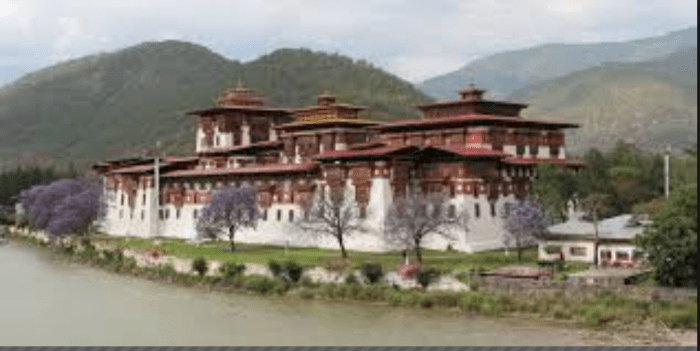
We went to my Lama’s village in Punakha, 3 hours East of Thimphu, for the final marriage license. One day when the Lama was busy, I had a chance to circumnavigate the great Punakha Dzong. That means I got to walk all around the perimeter absorbing the energies. Here are a few photos below.
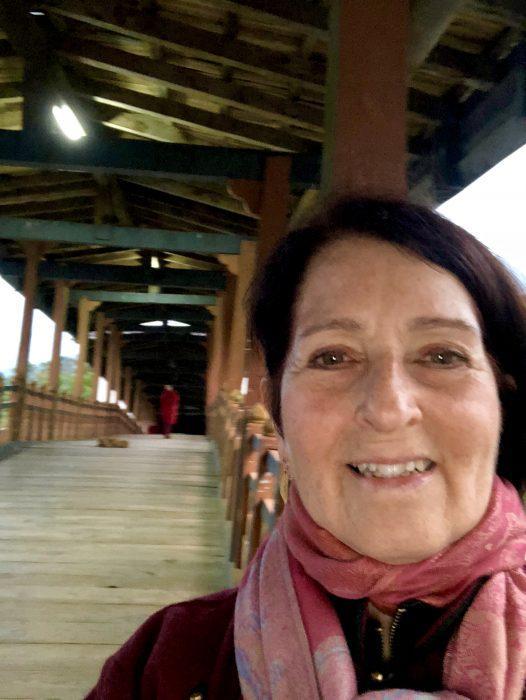
A huge 17th century bridge spans the river, leading to the monastery. Winters are very mild in Punakha. During the cold season more than five hundred monks live and study here.
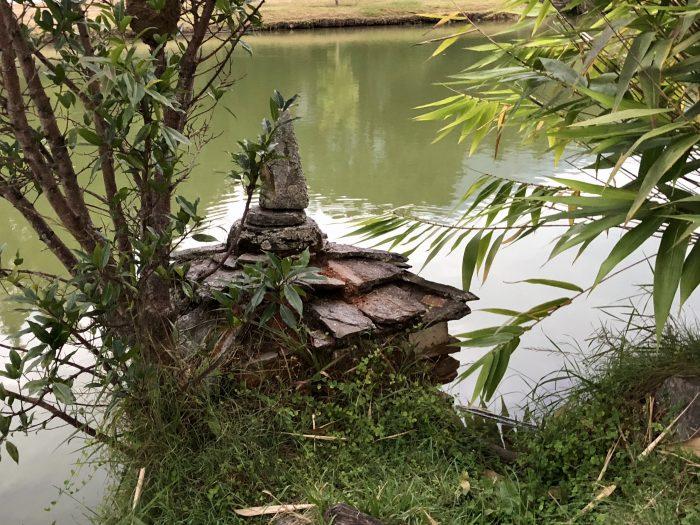
A lovely peaceful pond sits on the back side of the Dzong.

The Punakha Dzong is one of the largest monasteries in Bhutan. Constructed in 1638 by the famous patron saint of Bhutan, Zhabdrung Rinpoche Ngawang Namgyal, it is the second oldest and second largest dzong in Bhutan. Dzong means monastery fortress, and it is quite impenetrable.

The Punakha Dzong is beautiful at night. This was the site of the 5th King’s wedding in 2011.
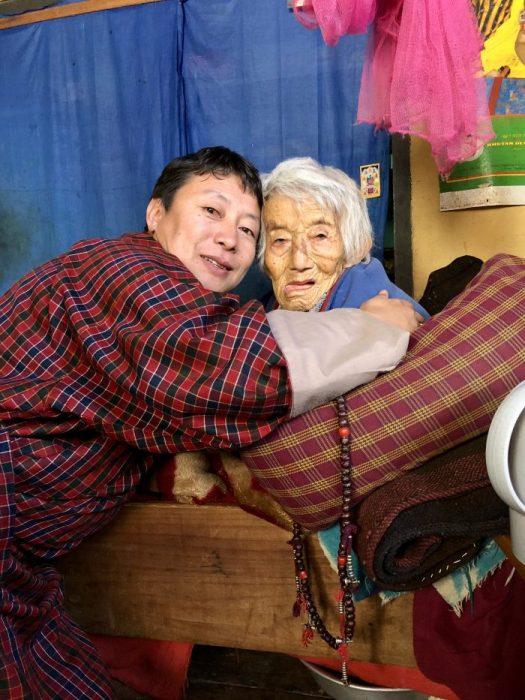
While we were in Punakha, Lama visited his 98-year old grandmother, Rinchen Pida. She is the head of the family, and my Lama is her oldest grandchild. He gives her massage and traditional healing remedies.

We’ve been staying in a cold apartment in the forest hills above Thimphu, without heat or internet. Periodically I go to the Jambayang resort to eat lunch and use their Wifi. When they’re not busy, they kindly give me a private dining room, which makes a pleasant office for phone and internet. My yummy lunch today was dal and curried veggies with paneer, homemade Indian cheese.
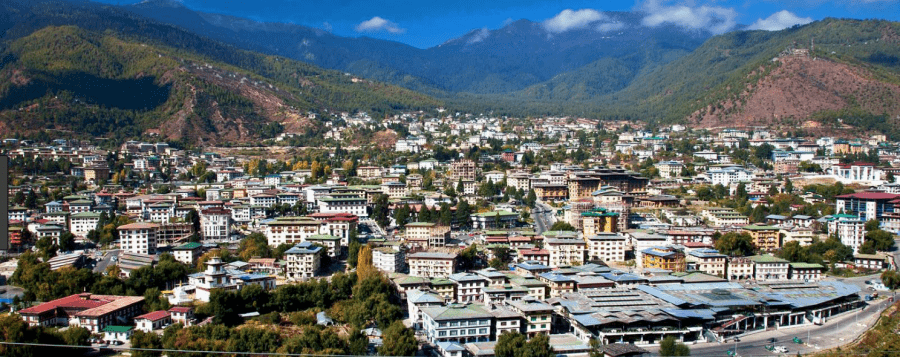
The skyline of Thimphu is quite beautiful nestled in surrounding mountains and forest. Thimphu is growing rapidly, as all of Bhutan is in a construction boom. Everybody wants to buy cars, and traffic is often congested.
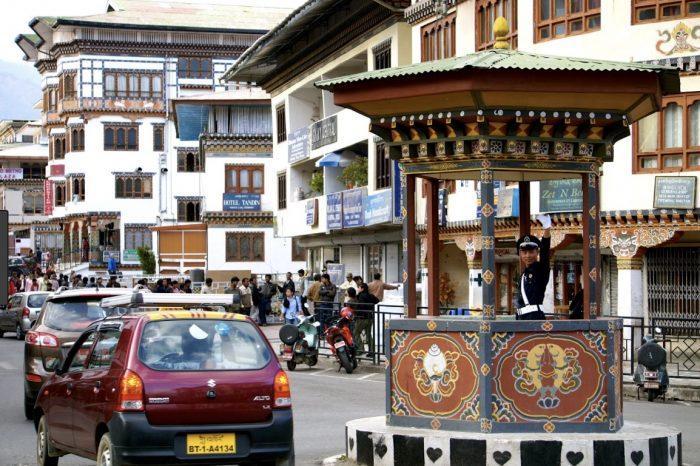
There are no traffic lights anywhere in Bhutan. Patient traffic police efficiently guide drivers, wearing spotlessly white gloves. Bhutan traffic is in stark contrast to Nepal. A few years ago they installed an automatic traffic light in Thimphu, but everybody thought it was too impersonal, so they got rid of it. This is the busiest corner in downtown. The traffic police are cordial and kind.
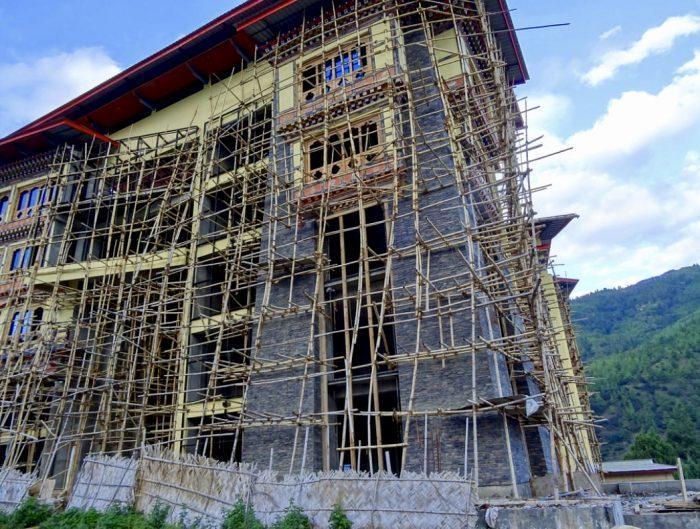
Construction Boom in all of Bhutan
Thimphu is alive with new construction, and buildings go up very fast. External scaffolds are tied together by Indian laborers using bamboo poles. Bamboo poles also support the weight of each floor while a building goes up one story at a time. The buildings are all constructed in traditional Bhutanese style. They all have internal plumbing, however there’s no central heat in the buildings.
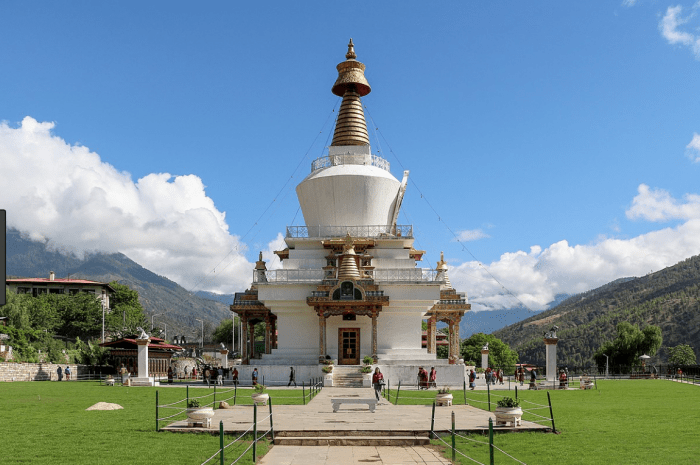
No Chemtrails in Bhutan.
Yep, the sky is always blue in Thimphu. This is the Memorial Chorten in the center of town, built according to Nyingma tradition of Tibetan Buddhism. It was erected in memory of the 3rd King, Jigme Dorji Wangchuck, after his death in 1972. The main patron was the Queen Mother, Phuntsho Choden. It is traditional to circumnavigate, or walk around it in a clockwise direction while chanting or in silent reverie. Prostration platforms are available on the right side for those who wish.

At the farmer’s market in central Thimphu, stall owners come 6 days a week, Thursday through Tuesday, taking Wednesdays off. Every grain and vegetable imaginable can be found here. There’s also a section for dairy, meat, chicken, and dried fish.

Bhutan has the freshest butter and cheese in the world, made from yak or cow’s milk. It seems I can’t tolerate dairy in the US, however I have no negative reaction whatsoever to this delicious stuff. The cheese is homemade, formed into flat balls, wrapped in plastic or traditional leaves.
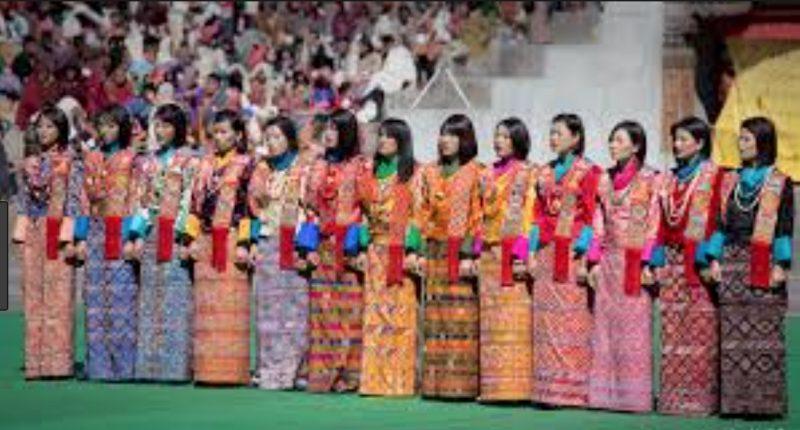
Women in Bhutan wear a wrapped Kira skirt of rather heavy fabric, a silk Wonju underblouse with collar and cuffs that show, and a Tego jacket over it. The fabrics are colorful and wonderful quality. All professional jobs require workers to wear traditional clothes of a Kira for women and Gho for men.
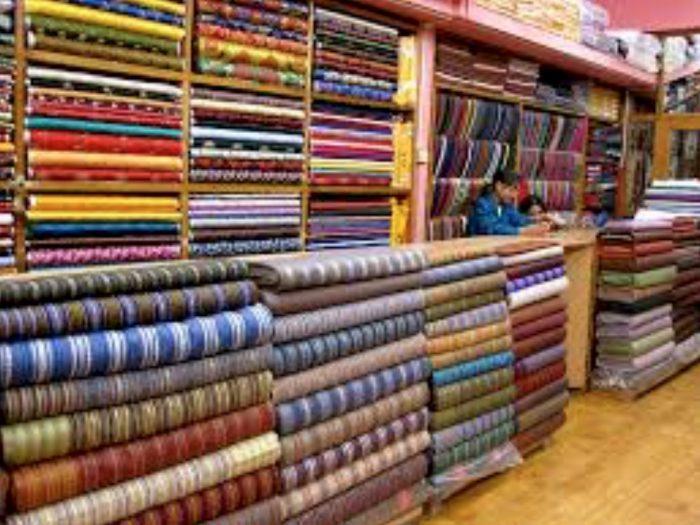
I decided I need an everyday Kira, as I’m tired of jeans. My sister Ghalem took me to 3 fabric stores. I couldn’t believe the beautiful fabrics we saw. We chose 2 simple Kiras, a Wonju, and a Tego that I can wear with both.
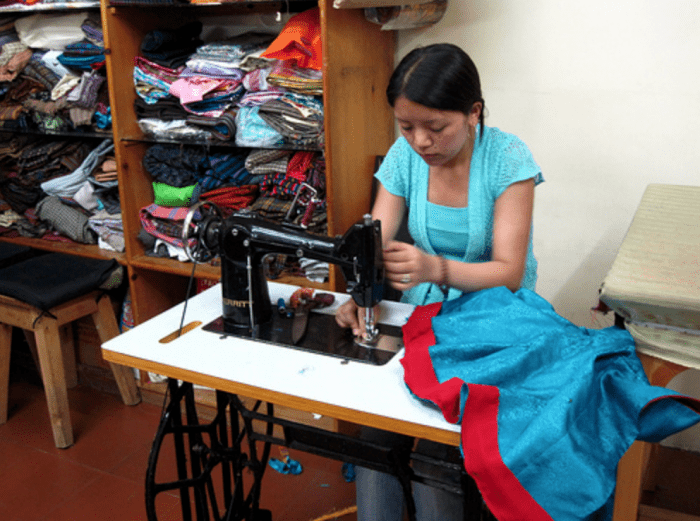
Then we went to Ghalem’s seamstress, who has a tiny shop in central Thimphu. She was busy pumping an old-fashioned treadle sewing machine operated with the feet. Clearly she makes hundreds of Kiras, Wonjus, and Tegos. She measured me in minutes and said they’ll be ready soon. Yay!
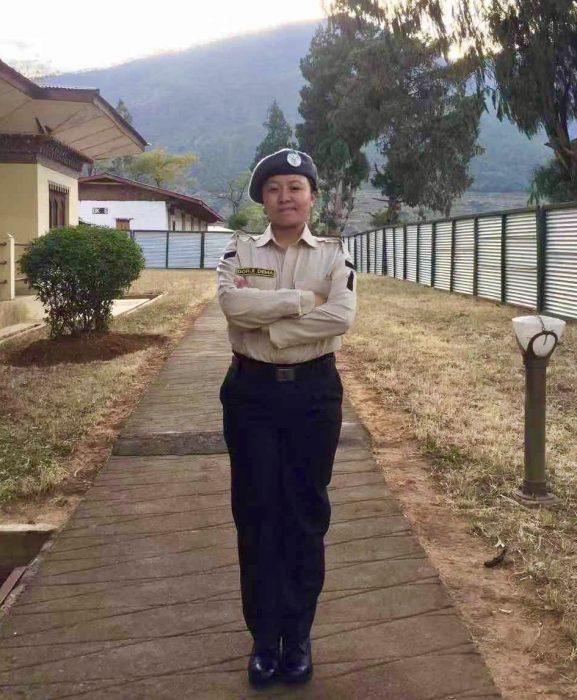
My cousin Dorji Dema is a lawyer for the Bhutan Department of Education, who helped assemble paperwork for my visa and marriage certificate. She sent me this photo of her military training on WeChat, which is our favorite social network connecting everyone in the family.
The 5th King has requested that every civil employee take military training. Without Armed Forces, Bhutan has created a practical defense system for any emergency, using camps to train their most capable government workers. She says they wake up at 3 am, their camp training schedule is rigorous, and she gets very tired. She has very limited time to communicate with family and friends.
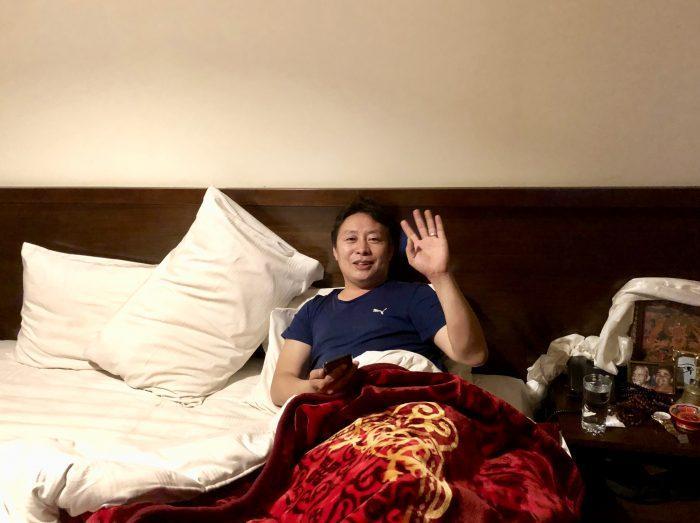
Now that winter is here, Lama and I moved to a hotel room in the center of Thimphu, leaving behind the cold isolated forest apartment. It’s still temporary quarters, however we’re warmer, more relaxed, and there’s Wifi so I can work on my writing and websites. He’s waving to you. What an amazingly cheerful guy!
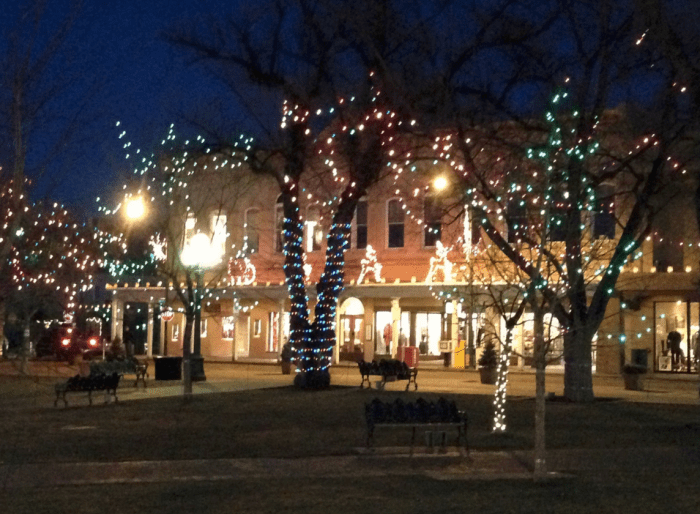
Coming to Santa Fe!
I’m so happy my permanent residence is approved by the Immigration Department. However to get my official card I must leave Bhutan for 15 days from December 1 – 16. So I’m making the best of things by coming to Santa Fe to take care of business, check things in storage, and visit friends. I’m looking for a comfortable place to stay if you have any ideas.
I’ll return to Bhutan mid-December. After that Lama and I plan to settle in Paro, a beautiful, clean city surrounded by forest and mountains, near the main airport, one hour west of Thimphu. I’ll most likely be teaching English in a private high school while we apply for his US visa.
Thanks for checking in. Next week I’m in Thimphu packing my bags for Santa Fe. Maybe I’ll see you soon!


